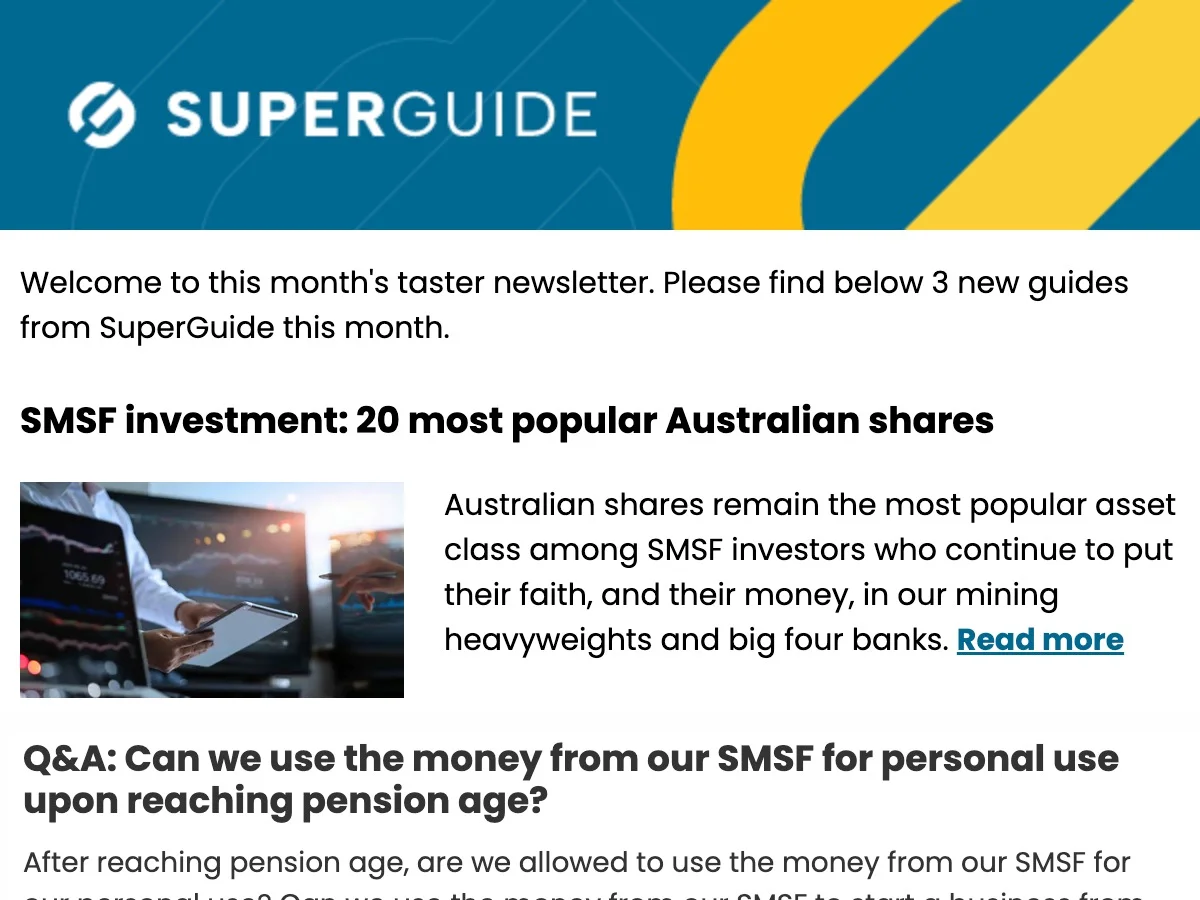In this guide
One of the golden rules of investing is diversification, but that can be difficult to achieve when you are just starting out, have limited funds, or feel that you don’t have the time, inclination or expertise to select investments in a crowded global market.
That’s why managed funds have long been popular; to provide diversification across and within asset classes in a single purchase. Problem solved. Except now investors have a new problem.
The range and variety of managed funds have grown exponentially as new technology has allowed for new types of managed funds. Traditional unlisted managed funds now compete with a groundswell of interest in exchange-traded funds (ETFs) and an old stalwart – listed investment companies (LICs) – along with the newer listed investment trusts (LITs).
Choosing the right investment vehicles for your portfolio can be confusing, so we’ve summarised the main technical and other differences in the table later in this article.
What are the similarities?
ETFs and LICs/LITs are like managed funds in that your money is pooled with other investors to create a large portfolio of assets that is professionally managed.
2026 SMSF calendar
Our free calendar includes due dates for important documents plus suggested dates for trustee meetings and other strategic issues for your SMSF.
"*" indicates required fields
All allow individual investors to achieve greater diversification than they could alone and plug holes in their portfolio through exposure to sectors of the market they could not otherwise access.
What are the differences?
Not only do ETFs and LICs/LITs provide diversification, but they can be bought and sold on the Australian Securities Exchange (ASX) as easily as shares and have lower fees than traditional managed funds.
According to ASX figures, as at September 2025 there were 398 ETFs listed on the ASX, up 8.7% year-on-year. Over the same period, the market value of the sector increased 36.7% to $300 billion, as investors responded to strong share market returns and increased their exposure to fixed interest. This growth is remarkable given that ETFs have grown from a standing start in 2001, when there were only two listed.
Most ETFs still passively track an index, but there are growing numbers of actively managed ETFs. Some active ETFs use derivatives to mimic an index and some use borrowing, options and short selling.
Over the same period, LICs/LITs grew in number from 85 to 89 while their combined value rose 10.7% to $55.6 billion.
To confuse matters, traditional fund managers tried fighting back, with some managed funds available via the ASX mFund service. This allowed you to buy and sell units in selected unlisted funds through a stockbroker.
However, the runaway success of ETFs sounded the death knell of this experiment. The ASX has been progressively winding down its mFunds, with the mFund platform due to be closed on 31 May 2026.
As at September 2025, there were 105 mFunds, down 48% from 201, and worth $506.9 million, down 64% from $1,407.5 million.
Infrastructure funds and Real Estate Investment Trusts (REITs) are also popular listed funds available on the ASX, but they are not included in this article.
What are LICs/LITs and ETFs?
LICs are the great grandfathers of the Australian listed managed investment scene, with a history going back almost 100 years. Trailblazers such as the Australian Foundation Investment Company (AFIC) and Argo Investments have provided investors with steady returns for decades, mostly from a portfolio of Australian shares selected by the fund manager.
These days, AFIC and Argo still dominate, but Wilson Asset Management (WAM) and other lesser-known names have strong followings. While Australian shares still account for the biggest share of total LIC/LIT assets, global share funds are catching up fast through managers such as WAM. Newer LICs/LITs also offer exposure to micro-caps, infrastructure, private equity, fixed interest and absolute return funds.
By contrast, ETFs invest in a basket of shares or other investments that generally track the performance of a market index such as the ASX200 Index or the US S&P500.
Supercharge your SMSF

"*" indicates required fields
You can buy an ETF to gain exposure to an entire market, a region such as emerging markets, a sector such as technology stocks, or a theme such as sustainability. They also offer investments in a wider range of asset classes, from local and international shares to fixed interest, commodities, currency, property, infrastructure and cash.
The most popular ETFs in 2025 are Australian and global equities, on the back of strong sharemarket returns, with only a smattering of bond and property securities ETFs in the top 20.
The rapid growth of ETFs has led to an increase in product providers, but the big players remain Vanguard, BetaShares, iShares and VanEck.
Structure and tax
As the name suggests, LICs use a company structure while ETFs, like traditional managed funds, are unit trusts. (LITs are also trusts but share other characteristics with LICs, as we explain below.)
Like other companies, LICs are governed by the Corporations Act. This means they pay company tax on their income and realised capital gains, which they can hold onto or pay out as dividends plus any franking credits. Investors are then liable for tax at their marginal rate.
By contrast, ETFs (and LITs) are not required to pay tax on their income or realised capital gains. Instead, they pass on all tax obligations to investors who pay tax at their marginal rate. Despite these differences, the after-tax position for investors is similar.
A key difference between ETFs and LICs/LITs is that LICs and LITs are closed-ended investments, which means they have a fixed number of shares on issue and new shares can only be created or cancelled via a rights issue, placement or buyback.
This structure means LICs/LITs tend to trade at a premium or discount to the value of their net tangible assets (NTA). Like all companies trading on the ASX, it’s the market that determines the share price, not the value of the company’s underlying assets.
On the other hand, ETFs are open-ended, which means units in the fund can be created or redeemed according to investor demand without the share price being affected. As a result, ETFs tend to trade close to their NTA.
Fees and costs
One of the drivers behind the growing popularity of ETFs is their low fee structure. Traditional actively managed funds tend to be more expensive than index-managed funds, ETFs and LICs due to their teams of researchers and fund managers, more frequent trading and hence higher transaction costs, and higher administration fees.
Index funds are lower-cost than active funds because the fund manager is simply mirroring their chosen index. That means there is no need for investment analysis or selection and generally lower turnover of investments.
Managed funds may charge a range of fees, including an entry fee, additional contribution fee and a fee to cover the ongoing costs of managing your investments called the Management Expense Ratio (MER), which is typically 0.5–2.5% of your account balance. There may also be a performance fee if the fund manager exceeds their target or benchmark above a certain percentage threshold.

Free eBook
SMSF investing essentials
Learn the essential facts about the SMSF investment rules, how to create an investment strategy (including templates) and how to give your strategy a healthcheck.
"*" indicates required fields
LICs/LITs charge management fees ranging from around 0.1–1.5% of net assets. Performance fees may also be charged, at a fixed percentage of returns above a set benchmark.
ETFs are generally the cheapest, with the average MER sitting at around 0.55% and the lowest fee a tiny 0.03%.
To find out the fees and other costs charged by a managed fund, ETF or LIC/LIT you need to check their product disclosure statement (PDS). You should be able to find this on the fund manager’s website.
Of course, cheap is not necessarily best. An active manager who consistently outperforms the market at a level exceeding their performance fee may be worth the cost. The most important consideration where fees are concerned is always the net return after all fees and charges.
And don’t forget transaction and advice fees. To buy an ETF or LIC/LIT you will need to pay a broker’s fee. If you purchase a fund via a financial adviser or a platform, there will be charges for each.
Why now?
The growing interest in ETFs can be traced back to the growth in self-managed super funds (SMSFs). SMSF investors are not only keen to keep investment costs down, but they are also on the lookout for simple, effective ways to create a diversified portfolio tailored to their personal needs.
Super knowledge is a super power

"*" indicates required fields
The expansion of products on offer has also made it easier to take advantage of market trends, such as improving economic growth, rising/falling interest rates or rising commodity prices. For example, in the year to September 2025, the value of crypto assets ETFs jumped 895% to $490 million (albeit from a very low base) after President Trump boosted the sector and turbo-charged prices.
LICs were given a shot in the arm following a change in the Corporations Act in 2010 that altered the way dividends can be paid out. This allowed them to pay a regular stream of franked dividends to investors seeking higher yields at a time of historically low interest rates. Some of the shine has been wiped off LICs in recent years, with the vast majority trading below net tangible assets (NTA).
All managed funds have their place
Despite the growing profile of ETFs, all types of managed funds can have a role to play in your portfolio depending on your needs. It’s not an either/or – you might hold all three for different reasons.
Some fund managers these days offer the same assets wrapped up in an ETF or LIC/LIT as well as a managed fund to attract different types of investors or those investing via different channels.
Managed funds can suit investors who want a low-cost way to add small amounts regularly. This makes them suitable for investors who want to build their investment over time, perhaps taking advantage of dollar-cost averaging.
ETF investors can add or sell units at any time, but they will incur brokerage on each transaction. As many online brokers charge a fixed dollar amount, ETFs may suit people making large or one-off investments. However, their simplicity and tradability have made them popular with younger first-time investors who are comfortable trading on mobile investment platforms.
Because ETFs are traded on the ASX like shares, they also offer the opportunity for experienced investors to use sophisticated trading strategies like limit and stop-loss orders. However, their easy tradability could prove costly if it encourages you to overtrade or try to time the markets.
Before choosing a fund, it’s important to understand how they work. Also look at their underlying investments, their performance and trading history, their tax status and distribution policy, as well as their fees and costs.
Table 1: Managed funds vs ETFs vs LICs/LITs
| Managed funds | ETFs | LICs (LITs) | |
|---|---|---|---|
| Asset ownership | Trust | Trust | Company (Trust) |
| Structure | Open-ended. Units are created or redeemed by the fund manager based on demand, which aids liquidity. Fund manager may need to sell investments to pay out investors in a falling market, or buy investments when demand is high in a rising market. | Open-ended. Market makers provide liquidity by always offering to buy and sell units. | Closed-end. Investors buy and sell shares from each other. This allows the fund manager to concentrate on selecting investments and saves on administration costs. The supply of shares/units is limited unless the fund manager raises capital. |
| Access | Accessed directly from the fund manager or via a financial adviser or platform. | Bought and sold like shares via a broker (investors must open an account with a broker). | Bought and sold like shares via a broker. |
| Investment style | Generally passive index funds that track a particular market or market segment. | Generally passive index funds that track a particular market or market segment. | Traded like stocks in real time, so the price changes continuously. Market maker on the other side of the trade, so the price is generally close to NAV, which is published daily. |
| Pricing | Orders to buy or sell units are transacted at the end of the day at the net asset value (NAV) of the underlying securities. | Traded like stocks, sale prices are based on how much investors are prepared to buy and sell for on the open market. This means the price may be at a large premium or discount to NAV. LICs need only publish their NAV monthly, although some provide more regular updates. | Management fees plus adviser or platform fees. Actively managed funds often charge a performance fee. Management fees are lower for index funds. |
| Income distributions | Must distribute all income and realised capital gains (less realised capital losses) from the underlying investments. Investors pay tax on these distributions at their marginal rate. | Must distribute all income and realised capital gains (less realised capital losses) from the underlying investments. Investors pay tax on these distributions at their marginal rate. | LICs only distribute income when the board declares a dividend. As LICs pay tax at the company rate, dividends are generally fully franked. (LITs – as for managed funds and ETFs.) |
| Income stability | As all income must be distributed, income can vary dramatically depending on the underlying investment/index performance. | As all income must be distributed, income can vary dramatically depending on the underlying index performance. | As an LIC determines when and how much income to pay investors, many LICs pay a steady income stream and avoid fluctuations. (LITs as for ETFs and managed funds.) |
| Cost | Management fees plus adviser or platform fees. Actively managed funds often charge a performance fee. Management fees are lower for index funds. | Generally low management fees plus brokerage. Costs are minimised because most are index funds. Also, there is no need to buy and sell units to meet demand. | Typically charge management fees plus a performance fee. Many LICs have a long-term buy-and-hold strategy, so fees are often lower than managed funds with similar assets. |
| Transparency | Actively managed funds often only list their top 10 investments, so competitors/investors can’t copy them. | All underlying holdings are available on the investment manager’s website. | All underlying holdings are generally available on the fund manager’s website. |



Leave a Reply
You must be logged in to post a comment.